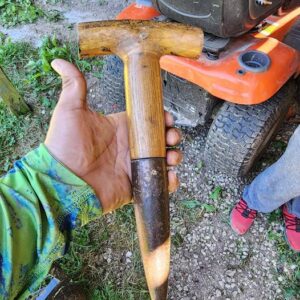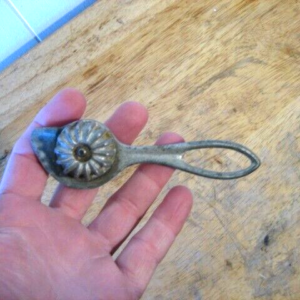History of Vintage Garden Line (Row) Markers
Garden line markers, also known as row markers, have a long history rooted in traditional farming and gardening practices. These tools date back to ancient agricultural societies, where precision in planting rows was essential for crop management and yield optimization. Early farmers used simple stakes and twine to mark straight rows, ensuring that plants had adequate space and access to sunlight and nutrients.
By the 18th and 19th centuries, as gardening became more popular among the European middle class, more sophisticated garden tools emerged. Craftsmen began producing beautifully designed wooden and metal garden line markers. These vintage markers often featured intricate carvings and durable materials, reflecting the era’s appreciation for both functionality and craftsmanship.
Usage of Garden Line Markers
The primary purpose of garden line markers is to ensure straight and evenly spaced planting rows. Here’s how they are typically used:
- Setting Up: Gardeners place stakes at either end of the garden bed. A string or twine is then stretched tightly between the stakes to create a straight line.
- Marking Rows: Using the string as a guide, gardeners can plant seeds or seedlings in a perfectly straight row. This method helps maximize space and ensures even growth.
- Weed Management: Straight rows make it easier to identify and remove weeds, as the orderly planting layout allows for clear differentiation between crops and unwanted plants.
- Aesthetic Appeal: Neatly aligned rows contribute to a garden’s visual appeal, creating a sense of order and beauty.
Legacy of Vintage Garden Line Markers
The legacy of vintage garden line markers is significant, as they represent a blend of practical utility and historical charm. Here are some key aspects of their legacy:
- Historical Significance: Vintage garden line markers offer a glimpse into the past, reflecting the agricultural practices and design aesthetics of earlier times. They are a testament to the ingenuity of past generations who relied on simple yet effective tools to cultivate their land.
- Craftsmanship: Many vintage markers are admired for their craftsmanship. Made from wood, iron, or brass, these tools often feature detailed designs and robust construction, making them collectible items today.
- Continued Use: Despite modern technological advancements, many gardeners still use traditional line markers. They appreciate the tactile, hands-on approach to gardening that these tools provide. The simplicity and effectiveness of line markers remain unmatched for many gardening tasks.
- Inspiration for Modern Tools: The design and functionality of vintage garden line markers continue to inspire contemporary gardening tools. Modern versions often incorporate classic elements while using updated materials to improve durability and ease of use.
Collectibility and Nostalgia
Vintage garden line markers are cherished by collectors and gardening enthusiasts alike. They evoke a sense of nostalgia, connecting users with the history and tradition of gardening. Collectors seek out these items at antique shops, flea markets, and online auctions, valuing their historical significance and aesthetic appeal.
Conclusion
The vintage garden line marker is more than just a tool; it is a symbol of gardening heritage. Its history, usage, and legacy highlight the enduring importance of precise and orderly planting in both small gardens and large farms. As a practical tool and a collectible item, the garden line marker continues to hold a special place in the hearts of gardeners around the world.



